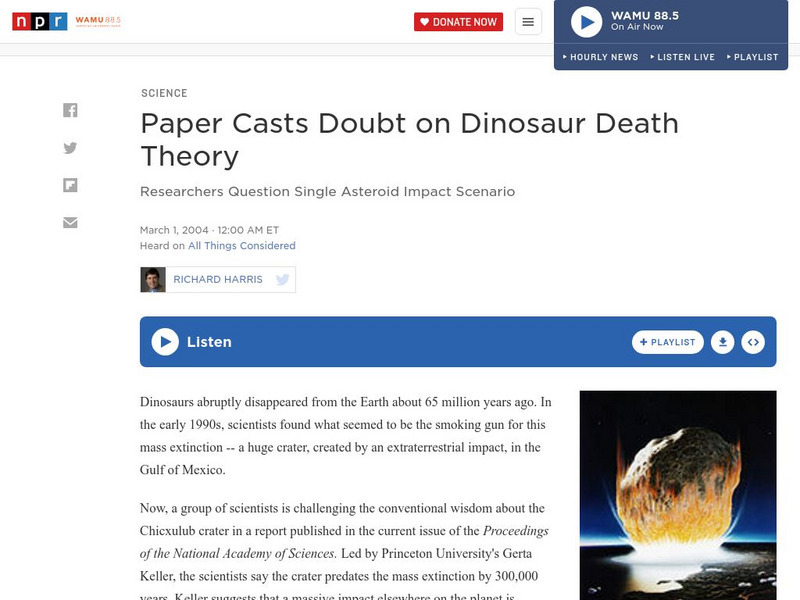Bozeman Science
Speciation and Extinction
Are we, as some scientists theorize, in the midst of the sixth mass extinction? Scholars explore speciation through adaptive radiation and extinction with a video that uses the three-spines stickleback in Alaska, and its current...
Be Smart
The Sixth Extinction
Did you know that 98 percent of organisms that ever lived are now extinct? PBS Digital Studios presents viewers with information about previous extinctions, their causes, and related statistics such as what percent of organisms went...
TED-Ed
When Will the Next Mass Extinction Occur?
Normal background extinctions and mass extinction events are examined in this short video that suggests that environmental change, naturally occurring and change caused by humans, is the key factor in such events.
Curated OER
Miracle Planet - Snow Ball Earth 3/5
Thermophiles and other microbes give hints as to how life can continue in extreme temperatures. Fossils in the Namibian Desert are relatively undisturbed and offer other keys to life. Your biology and earth science classes will want to...
Smithsonian Institution
National Museum of Natural History: Qrius: How Fossils Explain the Rise of Dinosaurs
Find out how this paleontologist believes dinosaurs rose to higher grounds following a mass extinction hundreds of thousands of years ago. [36:38]
Smithsonian Institution
National Museum of Natural History: Qrius: Mass Extinction Solving the Dinosaur Mystery
Dinosaurs were not the only life to go extinct and leave a trail to their history. This webcast presents a paleobotanist who has studied extinction at a site in North Dakota. He discusses mass extinction. [29:16]
Howard Hughes Medical Institute
Hhmi: Bio Interactive: Mesozoic Film With Quiz
This video focuses on what causes the extinction of the dinosaurs. Learn about Luis Alvarez's research that led to the discovery that an asteroid caused the mass extinction. Video includes embedded quizzes that check from students'...
Khan Academy
Khan Academy: How Do Earth and Life Interact?
A look at the 'comfort zone' humans live in, and the interplay of life and the biosphere. [9:58]
NPR: National Public Radio
Npr: Peering Inside Fossils
"A scanning device most commonly seen in hospitals is reshaping the science of paleontology by allowing researchers to peer inside irreplaceable fossils without damaging them." Find out what scientists are now able to see that they've...
SciShow
Sci Show: Mass Extinctions
Hank takes us on a trip through time to revisit the five major mass extinction events that have impacted species over the Earth's history, and leaves us with some thoughts about what could possibly be the sixth event - the one caused by...
NPR: National Public Radio
Npr: Paper Casts Doubt on Dinosaur Death Theory
Some scientists are challenging the conventional wisdom that dinosaurs abruptly disappeared because of a huge crater created by an extraterrestrial impact in the Gulf of Mexico. Find out about this challenge and what they're saying about...
NPR: National Public Radio
Npr: A Guinea Pig the Size of a Horse
This site is provided for by National Public Radio. A seven foot tall rodent that weighs nearly one ton seems like something out of the movies, but researchers have found a skeleton of a rodent the size of a horse. Read about this...









